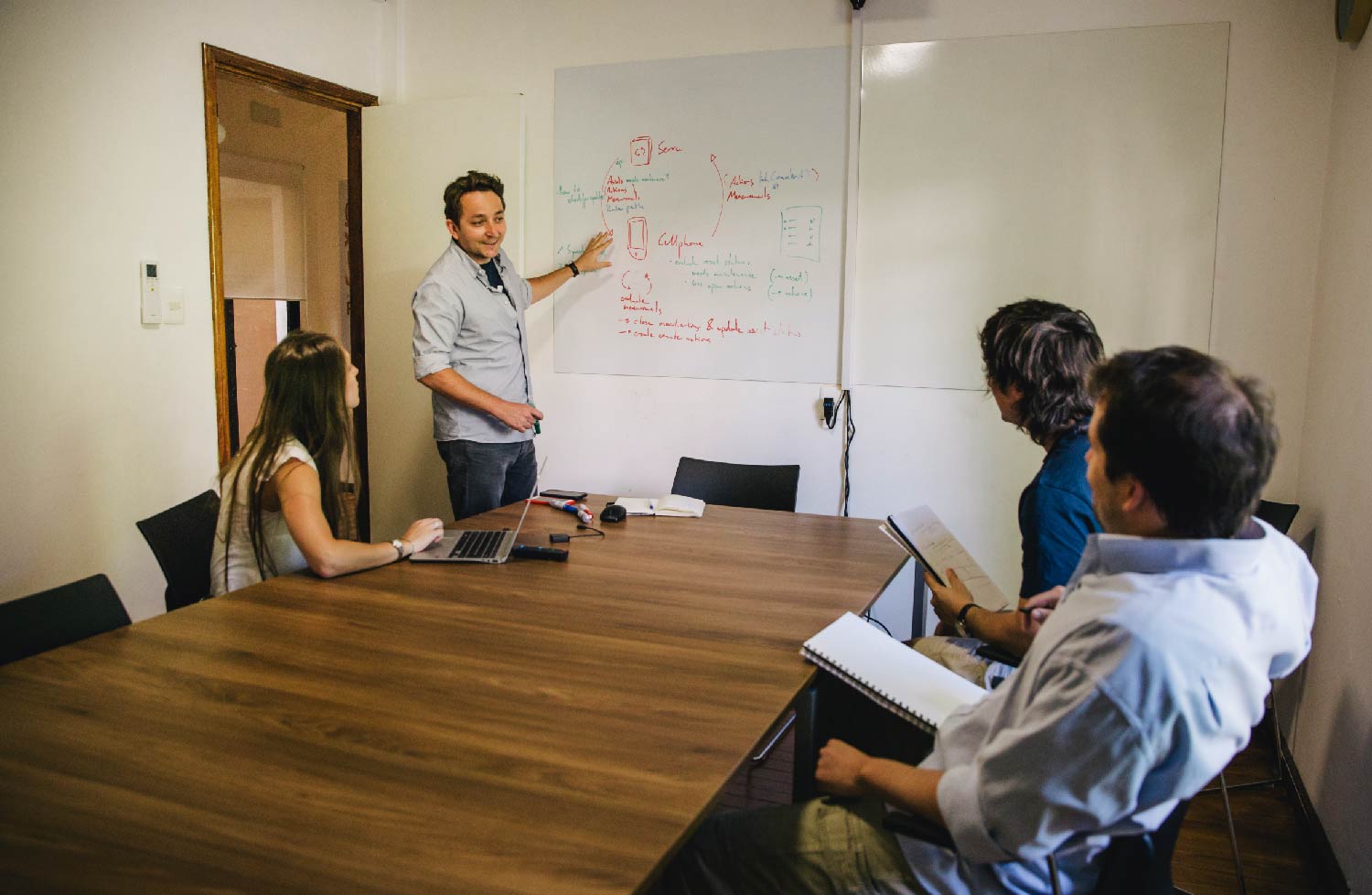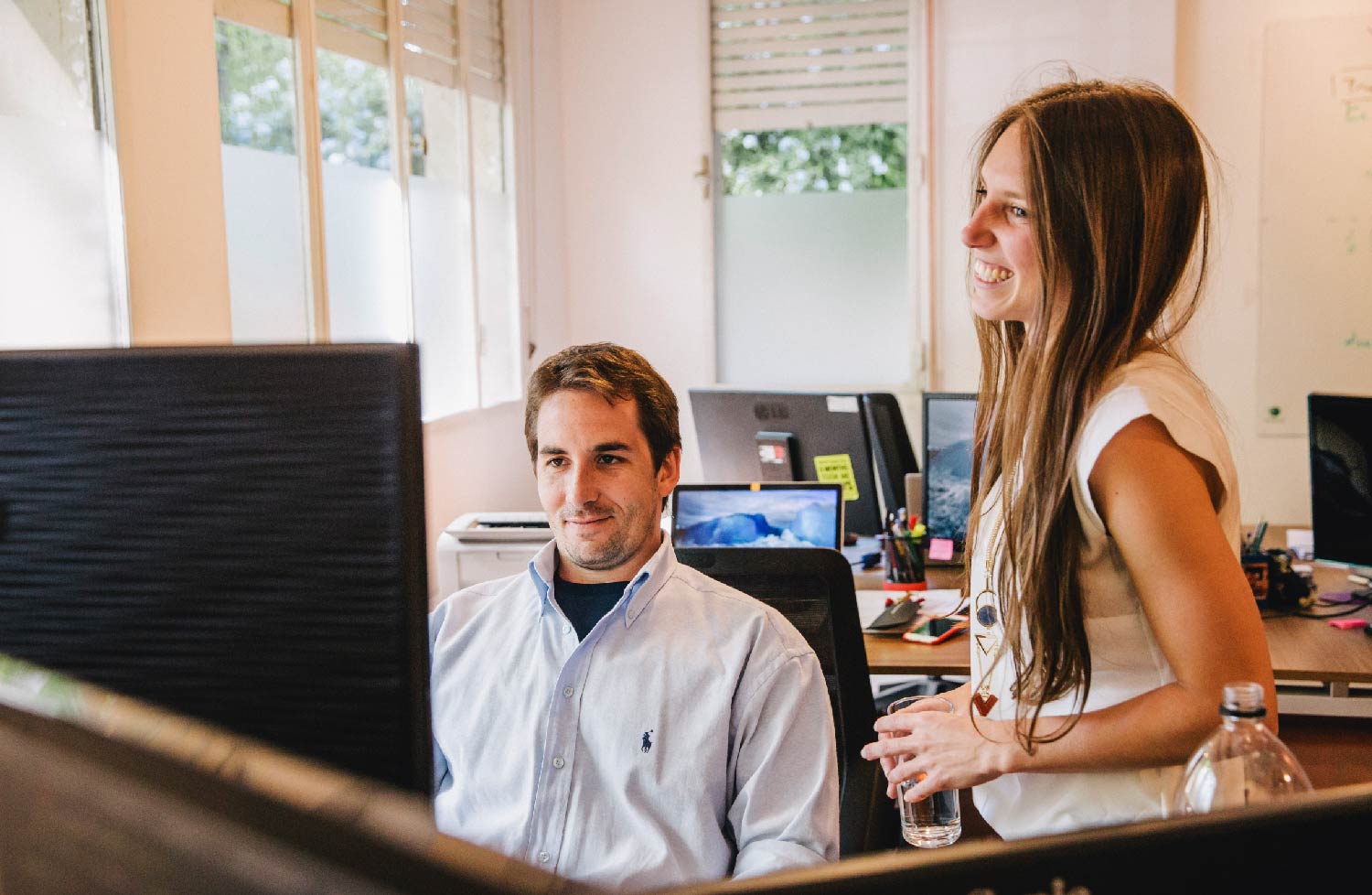



Design thinking emerged in the 1950s and has since become central part of every stage in business, computer science and even education. David Kelley (Founder of IDEO) is a famous promoter of this method. To sum up the essence of design thinking:
The last twelve weeks were all about design thinking methods here at DESIGN-IT. We decided to take these methods and put them to test ourselves. Some of them were already known between team members while others were used without knowing that they are formalized as a design think method. Goal of this was to see how methods applied consciously, help in stages of development or design; if and how they help team building.
Read more about our experience these past 12 weeks below.
Following methods were put each week to test (click on each to go to the dedicated blog post):
Letter to grandma (Product understanding)
Powers of ten (Product understanding)
Finger feedback (Communication)
Paper prototype (Ideation, Experimenting)
HOW
One of our employees is currently writing the master thesis regarding design thinking methods. The thesis includes an overview of these methods, so we gladly agreed to put them to test. Each new week mondays a method was discussed. Then during the week the team either together or split up in groups would perform the tasks discussed. Fridays we would then present the results and after we would have a feedback session about the method and our experience with it. We would also discuss what we really liked about the week, what our concerns are and if we would use the method again in our projects.

WHY
These methods have different important focal points ranging from understanding the user and product to prototyping, ideation or communication. It’s meant to ensure that every stage in the design process is covered: empathising with the user, define problem /solution, ideation process, prototyping and experimenting. As you may have already noticed this approach is human centered. It revolves around understanding the client /user and developing the best solution / product according the this.

This is exactly what we aimed for with this twelve week experiment: ensuring and pointing out that we focus on our customer’s needs. While the needs and ideas of the customer are the most important and first step in a problem solution, it is not the only important step. We have to constantly develop these ideas and showcase prototypes that meet their needs. This means sessions of ideation, prototyping, designing. So through these set of design thinking methods we wanted to give ourselves a new boost, other ways of approaching app developing.
In the same time it was meant to be an experiment but also a check-up tool for us and our way of developing and coming up with new ideas. Since design thinking methods have gained more and more prestige in the last years, we wanted to have a hands on experience ourself.
Conclusions from our feedback sessions
These 12 weeks have been definitely an interesting experiment. There were situations where the team already knew how and when to use a specific method. Or with other occasions they realized that one or more methods are really interesting and easy to use everyday at work ( e.g. Five whys, the feedback tools or even methods like paper prototype).
The methods are not only very good for designers, but also for developers. In later stages of developing we are always concerned with usability, outlook, and the style of a software. So with these methods we refreshed our mindset and our focus when developing a new concept.
In the end our user is the main focus point. So it was a nice experience to remind ourselves when developing usability functions. We will continue using these methods whenever we think they are apropriate and not too time consuming. Since some of them need preparation and research in advance we need to think really good before using them. Working on a budget and in a given timeline it is not always possible.
25 Oct 2018